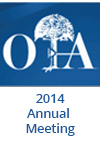
OTA 2014: Syndesmotic fixation offers no benefit in SER IV ankle fractures

OTA 2014: Syndesmotic fixation offers no benefit in SER IV ankle fractures
Syndesmotic Fixation in Supination–External Rotation Ankle Fractures: A Prospective Randomized Study at a Minimum of 4 Years of Follow-up
CONFERENCE ACE REPORTS
This ACE Report is a summary of a conference presentation or abstract. The information provided has limited the ability to provide an accurate assessment of the risk of bias or the overall quality. Please interpret the results with caution as trials may be in progress and select results may have been presented.
Synopsis
A total of 140 patients diagnosed with Lauge-Hansen supination-external rotation (SER) IV ankle fractures were identified in this prospective randomized trial. 24 patients were identified as having an unstable syndesmosis (external rotation stress test) comparatively to the ipsilateral ankle, and were randomly allocated to either receive syndesmotic screw fixation or no syndesmotic fixation. The r...
To view the full content, login to your account,
or start your 30-day FREE Trial today.
FREE TRIAL
LOGIN
Forgot Password?
Explore some of our unlocked ACE Reports below!

Learn about our AI Driven
High Impact Search Feature
Our AI driven High Impact metric calculates the impact an article will have by considering both the publishing journal and the content of the article itself. Built using the latest advances in natural language processing, OE High Impact predicts an article’s future number of citations better than impact factor alone.
Continue



 LOGIN
LOGIN

Join the Conversation
Please Login or Join to leave comments.